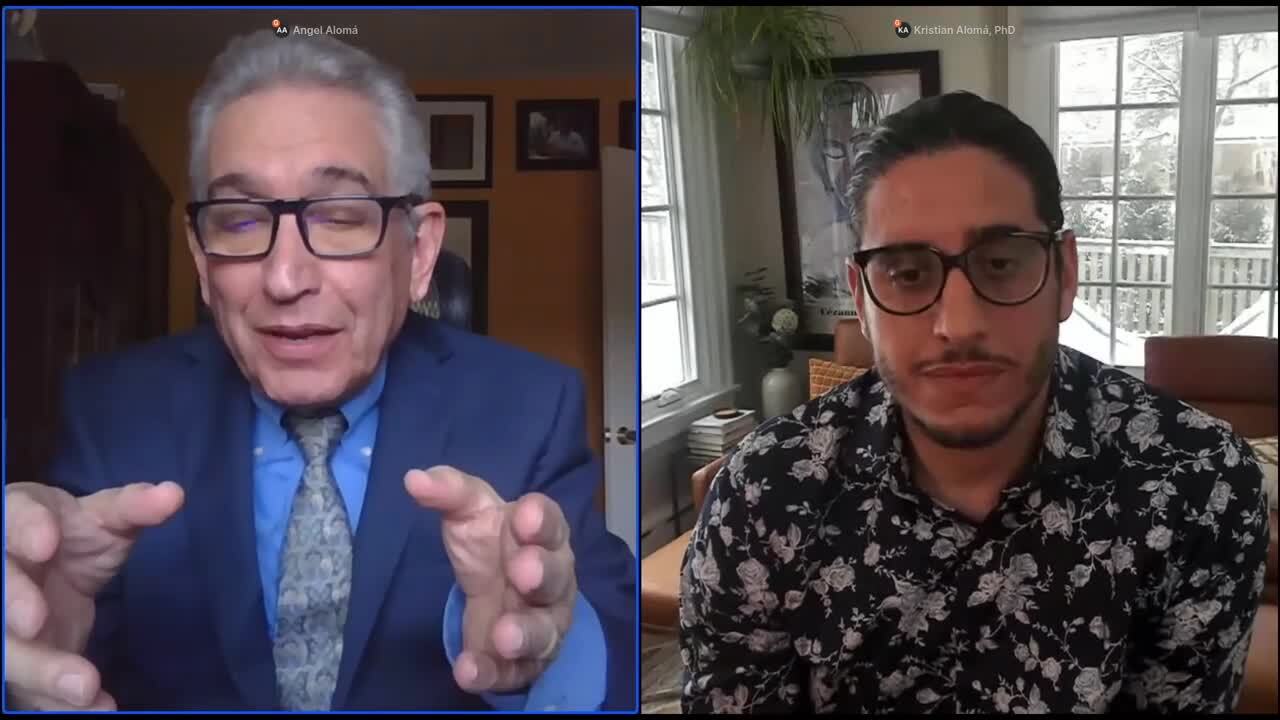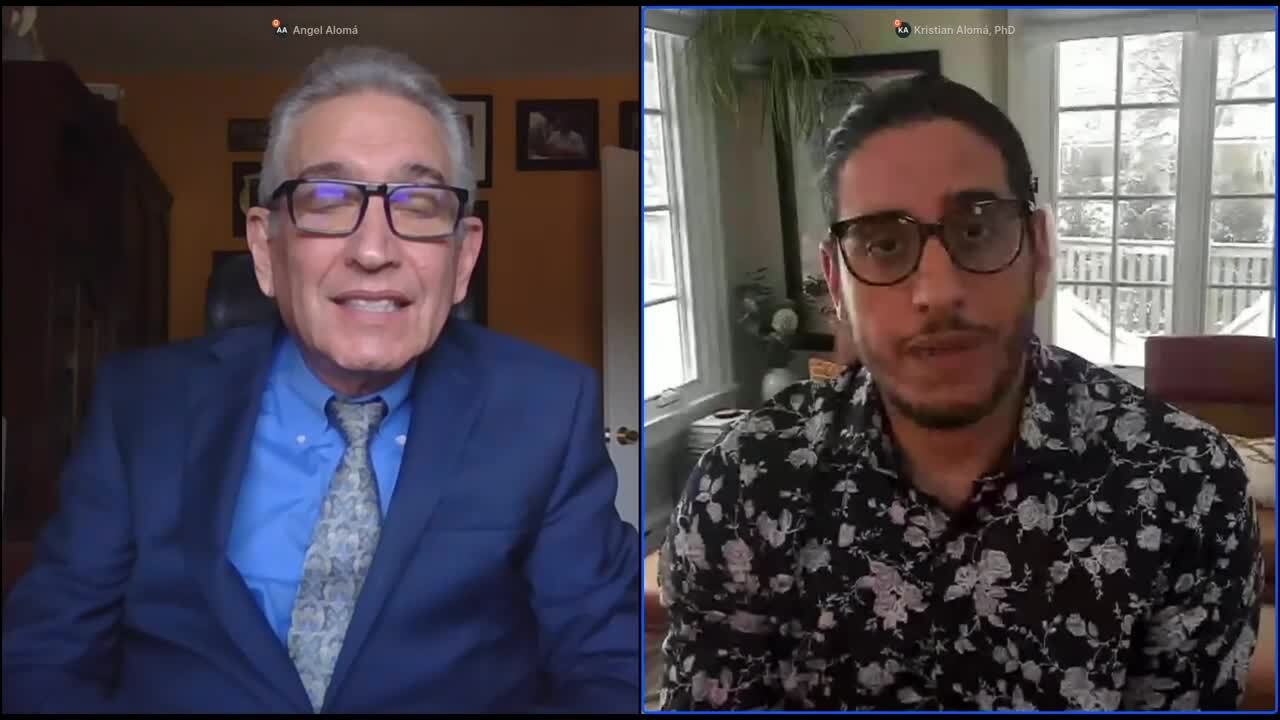.png)
If you missed the CharityEngine webinar featuring the dynamic father/son duo of Angel and Kristian Aloma, you missed a highly entertaining and informative talk. But fear not! This article will recap the biggest takeaways from their presentation.
We've even pulled some clips of stories or explanations you've just got to hear in their own words!
These gentlemen blended psychology, branding, and, for Angel, years running the largest international charity in the country, Food for the Poor. Through compelling stories and a few well-timed one-liners, they gave our nonprofit audience invaluable tips to increase giving and deepen their relationships with their stakeholders. We were delighted to host the two of them together on stage for the first time!
If you would rather see the whole webinar, watch it here. If you’d rather get a summary, let’s dive right in.
Donor is King
Echoing earlier comments he’s made, Angel started by talking about how a donor-centric approach will benefit nonprofits. Kristian referenced a quote that explains that donors don’t give because we have needs they can fill. They give because we meet their needs.
So what does that mean for nonprofits? Knowing your donors and making them feel like royalty will help increase fundraising and strengthen your donor relationships.
Angel thinks Moses said it best. What does Moses have to do with donors? Here’s what!

Kristian chimed in and explained the idea of narrative psychology. He said,
“Narrative psychology essentially looks at the way people are heroes of their own stories. We often have to remind folks that if you place your organization as the hero in your stakeholder’s story, there’s no room for them to be the hero.”
The conversation turned to ideal moral identity, meaning we all wake up wanting to better ourselves somehow. If nonprofits can help donors feel closer to their ideal moral identity - showing them that, through language, communication, and your relationship, they are, in fact, the hero - giving can increase as much as 80%.
What’s the takeaway for nonprofits?
- Have conversations with your donors
- Place them and their impact at the center of your communications
- Focus on how good they are and the legacy they will leave
- The better you can make a donor feel, the more likely it is they will come back and give repeatedly
Our speakers discussed something close to our SaaS-selling hearts: Make sure your technology is helping make your donors feel like royalty. A nonprofit CRM will allow you to collect many data points on donors.
If, for example, Angel was speaking with a donor to Food for the Poor and she mentioned her husband was going to have heart surgery in a few weeks, he could set an alert using technology so that he remembered to call her and inquire about her husband.
Here’s a success story you need to hear yourself! Angel explains how Food for the Poor sent a newsletter that netted $1.3 million in nonprofit donations and earned a place in a book by nonprofit guru Tom Ahern.

Experience Over Features
When Angel last spoke to us, he talked about what nonprofits can learn from CarMax. In this webinar, he explained how Volvo can show us how to best communicate with donors.

As Kristian reflected on the advertising and marketing industry in which he works, he agreed. He explained that they’ve been able to conduct research that shows the data is important, but “if you don’t weave (those data elements) into a story, if you don’t create this more immersive experience around why these elements are important, the donor misses it.”
He elaborated on this concept of narrative transportation, which we might have experienced, as one viewer commented, if we get lost in a good book.

The Story of One
One of the most compelling ideas Angel and Kristian discussed was the power of one. Reflecting on Food for the Poor, Angel said the left brain hears that 30 million kids die of hunger yearly. The logical right brain thinks, “Well, I can’t feed 30 million children, so I can’t fix it.”
However, if a donor is introduced to one child suffering from hunger and is told that child could be fed for a week with a $25 donation, the right brain chimes in and donates. Here’s how they explained it:

An Ounce of Retention is Worth a Pound of Acquisition
This is a big takeaway for nonprofits: donors acquired are not as valuable as donors retained.
The sector has accepted the “leaky bucket syndrome,” in which we focus on filling our bucket with new donors and ignoring the donors slowly leaking out. These gentlemen discussed how it is much more difficult to get one new donor who will regularly give rather than spending the time nurturing the donors you already have who give regularly.
Kristian said we’ve all experienced the disappointment of our favorite company offering a discount to new clients. What? We’ve been loyal for years!
If nonprofits ignore the steady donors who give regularly, they focus on the wrong thing. Kristian said it all comes down to a concept at the heart of this point: how we build trust and deepen relationships with donors.
Here's what he had to say:

We’ve all heard the phrase, “It’s the thought that counts.” Kristian argues it really is the thought that counts in nearly every gift! Thought, he said, is probably one of the most valuable assets people can trade.
He said, "The biggest mistake I see nonprofit organizations make is when a donor gives, and they get an automated, computer-generated response as a thank you. It doesn’t demonstrate any sense of humanity.”
He continued with a fascinating anecdote that speaks to the psychology of giving.

Agape: Building a Culture of Love
Angel told a story about the crisis he found when he joined Food for the Poor and then explained how he used chocolate chip cookies to spread love to his team. His leadership style (and teaching style) is servant leadership, and he knew that making his team happy and treating them with kindness would transfer to his donors. An excellent baker, he would regularly make cookies and deliver them to his staff.
He said, “Love is important. It’s important not to treat your strategic partners as outsiders. It's important to bring them into the mission with love because then they really work hard for your mission. I would visit the phone centers every year and let them know that they were part of our mission because every time they raised the $19 ask to $25, they were feeding a child for 60 more meals. So you have to do that and really love everyone to get everyone enthusiastic about working.”
This psychological concept was further explained by Kristian.

The power of love, the power of agape, that starts with your team means that donors will want to be associated with your nonprofit. They will want you in their community and in their lives. It’s an important and powerful concept to implement.
System One and System Two
Kristian, building on his father’s right/left brain example, explained the concept as framed by behavioral economics. There are two different ways the brain processes information. He said that system one is emotional, looking for rewards, and making decisions quickly.
Then there’s system two, which is deliberate and thoughtful when considering the next steps. Studies have shown that 95% of our thinking and decision-making processes are informed by system one, the brain's emotional center.
If you, as a nonprofit, are using data points to explain your mission, you are “essentially missing 95% of the way a person will make a decision about their gift or which organization to support.”
Angel relayed a story from his time with Food for the Poor to illustrate his son’s point.

Kristian linked the concepts: humans are storytellers but also story thinkers. We access memories, think of the world, and make sense of things through stories.
He gave the example of a Coke/Pepsi study in which participants, at one point, sampled branded Coke and blind Coke. When participants tasted the blinded Coke, the part of the brain that registers sweet tastes and other sensory signals lit up. The brain processed the sensory experience of the drink.
But a completely different part of their brains lit up when they tasted the labeled Coke. What part? The memory center, the story center of the brain. Kristian said this suggested to researchers that people aren’t just drinking the soda; they’re telling themselves stories about times they drank Coca-Cola, maybe with their grandparents or as a treat after school.
He continues, “People don’t just connect to organizations because they give; they connect to the story they can create about your organization and how they fit in that story.”
Angel agreed, saying that the number-one reason people gave to Food for the Poor was to feel good about themselves.
Their fourth reason was to help the poor.
This concept is one he urges all nonprofits to consider.
Wrapping Up: Parting Words of Advice
These gentlemen offered some final words of advice for nonprofits looking to increase donor relationships and, therefore, fundraising.
Angel’s advice is to be true to your donor. Befriend them and know them, and treat them like kings.
Kristian’s advice is to start with the story and make it emotional, so your donors can place themselves in it and build a connection to your organization.
As we promised, Kristian and Angel blended psychology, branding and marketing, and years of successful fundraising to create a playbook for nonprofits wanting to deepen donor relationships and increase fundraising.
This webinar is a treasure chest full of ideas all nonprofits can use!

-1.png)
.png)
.png)